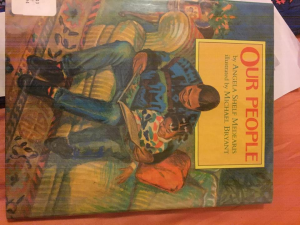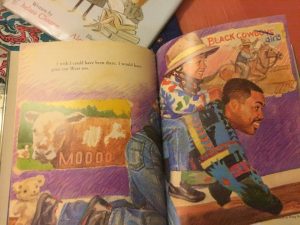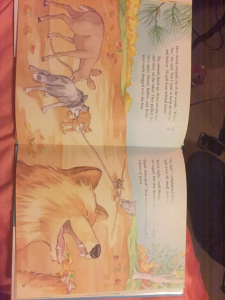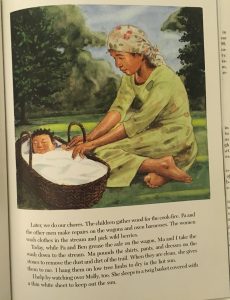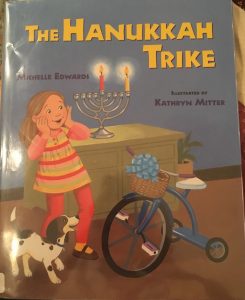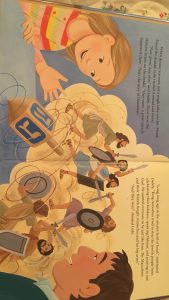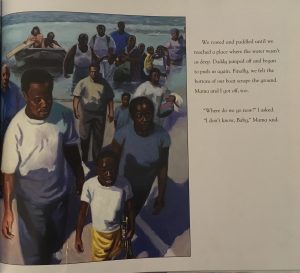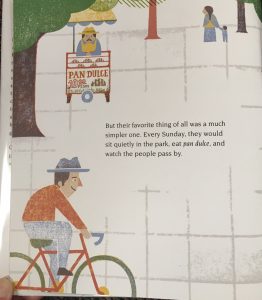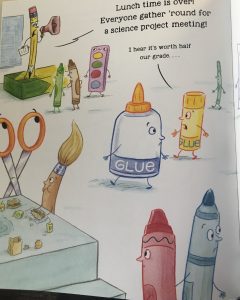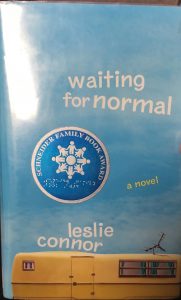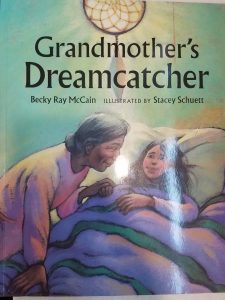Title: Our People
Author: Angela Shelf Medearis
Illustrator: Michael Bryant
Publication/ Year: Atheneum Books for Young Readers, 1994
Number of Pages: 25
Tags/ Themes: Culture, Family, Historical Fiction, K-1, 2-3
Genre: Fiction
Descriptive Annotation: This book is written from the perspective of the daughter, telling about what her father has told her about the history of their people. She recounts how they built pyramids in Africa, or were kings or queens or poets or artists in villages. She tells how they came across the ocean to explore the new world—this is only on one page and it is my biggest problem with the book. The way the author writes about this mass migration sounds like it was voluntary and for an adventure, not because of slavery. She does talk about slavery later, which is good, but this one part made me raise my eyebrows. The girl recounts how people were freed of slavery and went on to learn and invent things and get jobs. For each of these parts of her history she shares, she says how she wishes she could have been there to help. The book ends with her father telling her that she has a great future in front of her, and will continue bringing great things for their people.
Classroom Application: I probably would not use this book as a part of a lesson persay, but I think that a lot of the content is good for students to have access to in the classroom. It shares how creative, strong, and resilient people from African descent are. It helps teach students to be proud of their heritage, regardless of if you are the minority or not. While I have a bit of an issue with that one page described above, I think that the lesson of the book (being proud of who you are) is very important.
Linguistic and Cultural Diversity Analysis: The illustrations in this book are beautiful. They take up most of the page, and are realistic and colorful. They both illustrate the history of their people while also showing the little girl and how she dreams of big things. I think that it is really important to have books in the classroom that are about all kinds of different people and cultures, and I think this book does a really good job of showing how much this culture has overcome.
Illustration:
